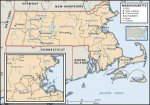- Joined
- Dec 10, 2011
- Messages
- 5,599
- Reaction score
- 2,717
Picture it this way (and a slight exaggeration): rail service at SPG so awesome that the only place it makes sense to take a bus from AMM is to/from SPG to catch a train.Alas, I misunderstood Arlington's intent. Because the PVTA and Peter Pan Bus Lines serve Amherst rather well, I'm uncertain as to why that town would need more bus service. A bus lane between Amherst and Northampton would be helpful, however.
That is my RAIL goal for SPG, not a real plan of bus service for AMM.
I want SPG-BOS (Amtrak Intercity) to average 90+ mph (requiring peaks of 125mph or more) to vastly outperform the Pike. I want SPG-NHV/STM/NYC to vastly outperform I-91/95. So vastly that Peter Pan will struggle to compete in its AMM-NYC and AMM-BOS runs and cut back to just AMM-SPG (or Palmer).
And Peter Pan will have network and connecting demand of its own such that I don't really expect it to leave the AMM-BOS/NYC markets entirely.
There will continue to be PVTC service to NHT both for the local market and for trips to VT (and onward to Montreal eventually)
So, yes, an AMM-SPG bus can't meet all of AMM's needs, but I want bus-rail (or bus-bus) connections at SPG to dominate on frequency and compete really well on duration--and do do so for every community west of the Athol-Quabbin-Ware meridian (in orange, below, aka the western edge of Worcester county)
Attachments
Last edited:


